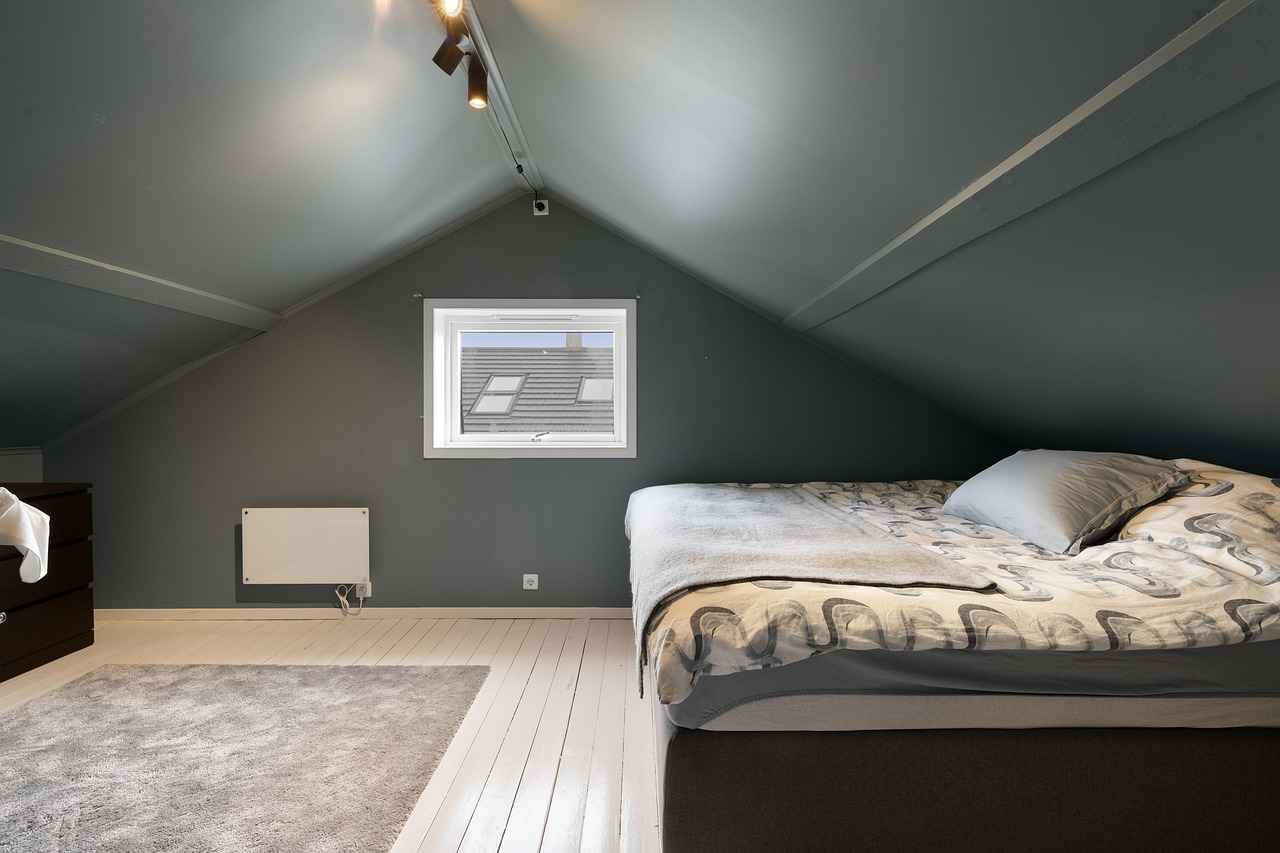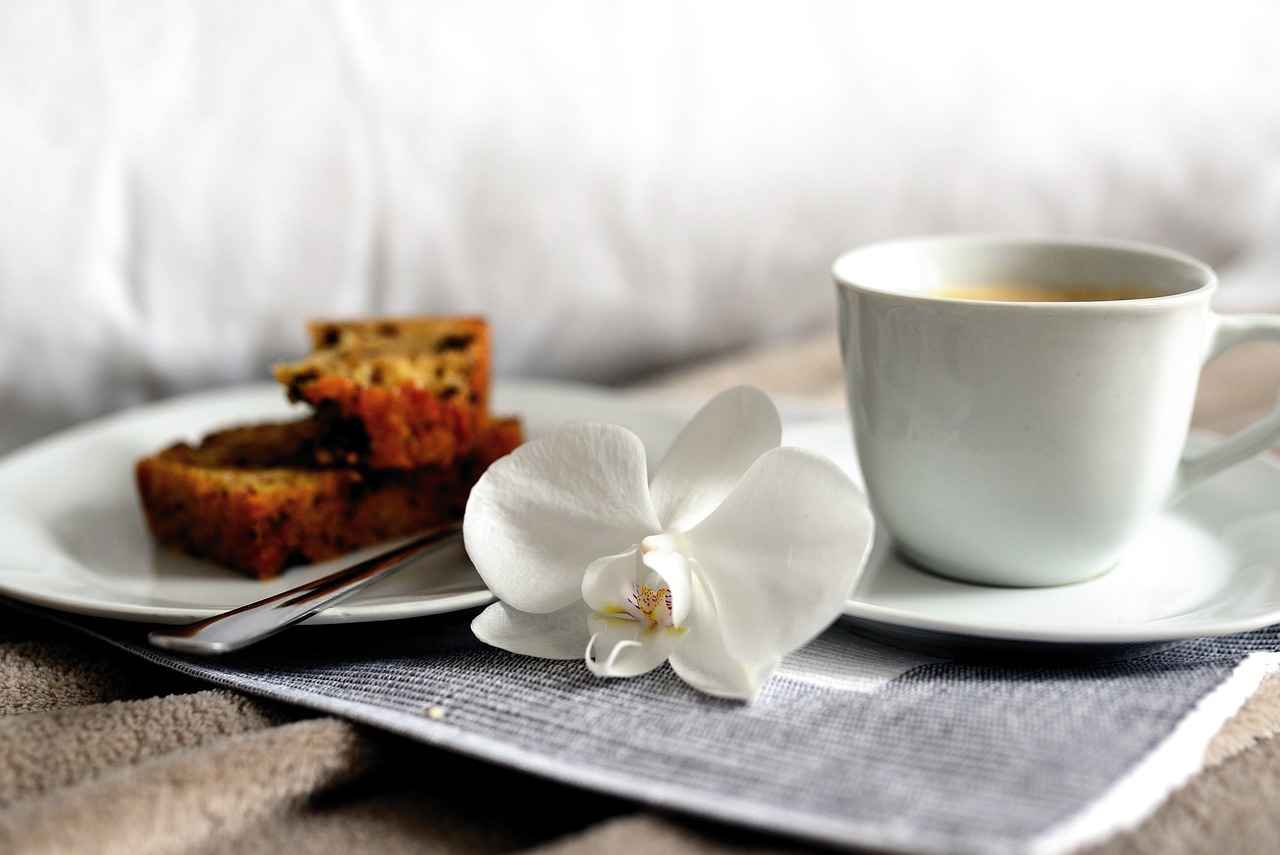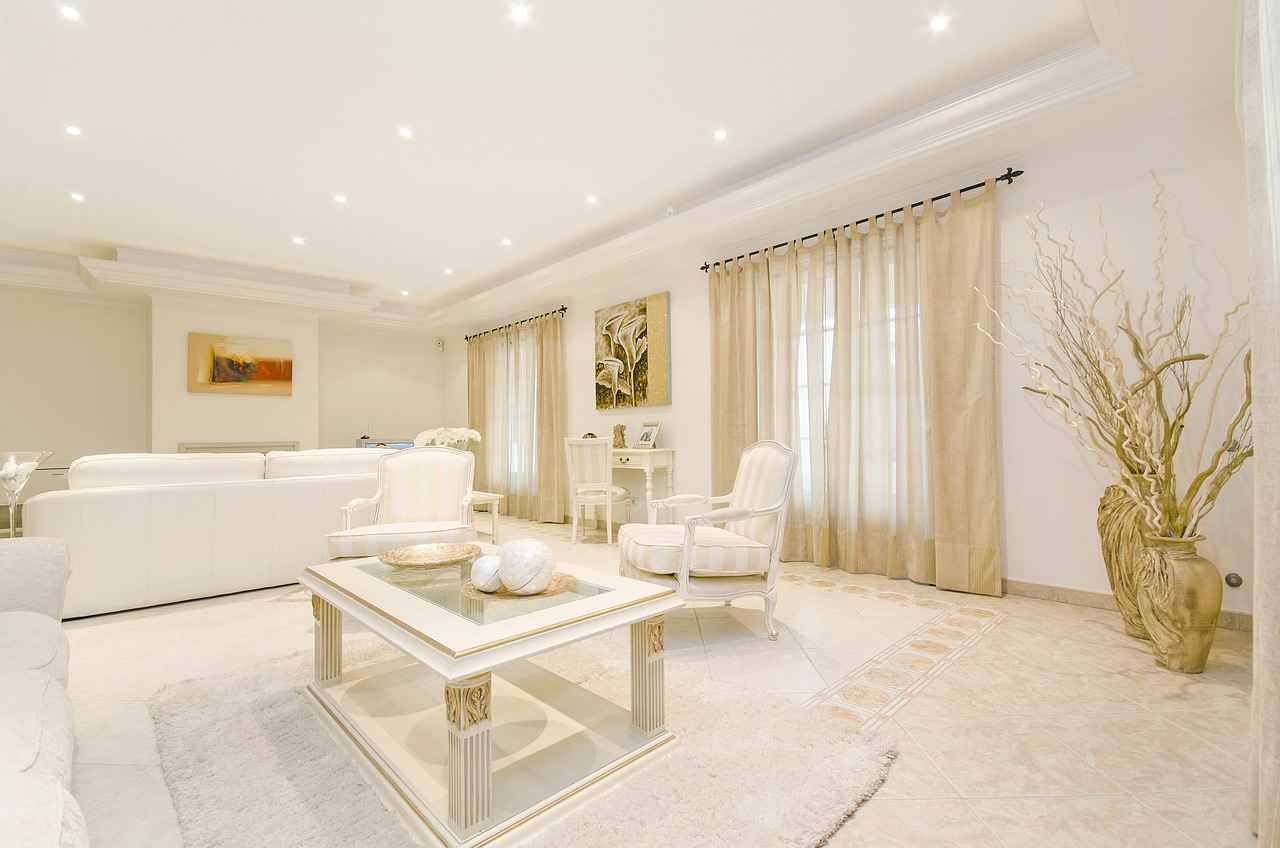This article delves into the world of contemporary bed designs that seamlessly integrate cushions to enhance comfort and style. With the right combination of aesthetics and functionality, these modern beds can transform your sleeping space into a cozy retreat. We will explore various styles, materials, and practical tips to create a warm and inviting bedroom atmosphere.
Understanding Modern Bed Design Trends
Modern bed designs are characterized by their sleek lines and innovative features. Popular trends include minimalist styles that emphasize simplicity and bold colors that provide a striking contrast. These designs cater to diverse tastes, making it easier for individuals to find a bed that complements their unique style while ensuring maximum comfort.
The Importance of Comfort in Bed Design
Comfort is essential when it comes to bed design. The right cushioning and materials can significantly impact your sleep quality and overall well-being. A well-designed bed not only provides support but also contributes to a restful environment, allowing you to recharge effectively.
- Choosing the Right Mattress
The mattress serves as the foundation of comfort. Here, we will discuss various types of mattresses, including:
- Memory Foam: These mattresses conform to your body, providing excellent support and pressure relief.
- Innerspring: Offering a traditional feel, innerspring mattresses come in various firmness levels to suit different preferences.
- Hybrid: Combining the best features of memory foam and innerspring, hybrid mattresses provide both support and comfort.
Incorporating Cushions for Added Comfort
Cushions can elevate your bed’s comfort level and aesthetic appeal. When selecting cushions, consider the following:
- Size and Shape: Mix and match different sizes and shapes to create an inviting look.
- Fabric: Choose soft, durable fabrics that complement your bedroom decor.
- Arrangement: Layer cushions in a way that invites relaxation, placing larger cushions at the back and smaller ones in front.
Materials That Enhance Bed Comfort
The choice of materials plays a crucial role in bed design. Popular upholstery fabrics include:
- Velvet: Offers a luxurious feel and is soft to the touch.
- Linen: Known for its breathability and natural texture, linen is perfect for a relaxed vibe.
- Cotton: A versatile and easy-to-maintain option that is soft and comfortable.
Cushion Fillings
Different cushion fillings can affect comfort levels. Common types include:
- Foam: Provides firm support and is often used in modern designs.
- Down Feathers: Offers a plush, soft feel but may require more maintenance.
Color Schemes for a Cozy Bedroom
Color significantly influences the mood of a bedroom. Warm neutral tones, such as beige and taupe, create a serene environment, while strategic use of accent colors can add personality without overwhelming the space.
Maximizing Space with Modern Bed Designs
Innovative bed designs can help optimize space in your bedroom. Storage beds, featuring built-in drawers or shelves, offer functionality without sacrificing style. Additionally, lofted beds can free up floor space, making them ideal for compact rooms.
Creating a Cozy Atmosphere with Lighting
Lighting plays a crucial role in setting the mood of your bedroom. Soft ambient lighting, achieved through bedside lamps and wall sconces, creates a warm atmosphere. Furthermore, layering different lighting sources can enhance the functionality and comfort of the space.
In conclusion, modern bed designs that incorporate cushions not only enhance comfort but also elevate the overall aesthetic of your bedroom. By selecting the right materials, colors, and lighting, you can create a cozy sanctuary that promotes relaxation and restful sleep.

Understanding Modern Bed Design Trends
In the world of interior design, modern bed designs have evolved significantly, reflecting a blend of aesthetics and functionality that caters to diverse tastes and lifestyles. This section explores the latest trends in bed design, highlighting the minimalist styles and vibrant color palettes that are currently in vogue.
One of the most prominent trends in modern bed design is the minimalist approach. This style emphasizes simplicity, clean lines, and a clutter-free environment, making it ideal for those seeking tranquility in their bedrooms. Minimalist beds often feature low profiles and simple headboards, allowing the overall design to maintain an airy and spacious feel. The use of natural materials such as wood and metal enhances this aesthetic, creating a harmonious balance between form and function.
In contrast, many homeowners are embracing bold colors to make a statement in their bedrooms. Rich hues like deep blues, vibrant greens, and even striking reds can serve as focal points, adding personality and warmth to the space. These colors can be incorporated through bed linens, accent pillows, or even the bed frame itself. The key is to balance these bold choices with more neutral elements to avoid overwhelming the room.
Another exciting trend is the incorporation of multifunctional designs. With the rise of smaller living spaces, beds that serve dual purposes are gaining popularity. For instance, storage beds with built-in drawers or lofted beds that free up floor space are practical solutions for maximizing functionality without sacrificing style. These designs cater to the needs of urban dwellers who require both comfort and efficiency.
Furthermore, the integration of technology into bed design is becoming increasingly common. Smart beds equipped with features such as adjustable firmness, temperature control, and even sleep tracking are revolutionizing the way we think about rest. These innovations cater to individual preferences, ensuring that every user can achieve their ideal sleeping environment.
As we explore modern bed designs, it’s essential to consider the importance of comfort. The right bed design not only enhances the visual appeal of a bedroom but also plays a crucial role in promoting restful sleep. By focusing on quality materials, thoughtful design, and personal preferences, homeowners can create a sanctuary that fosters relaxation and rejuvenation.
In summary, modern bed design trends reflect a dynamic interplay between aesthetics and functionality. From minimalist styles to bold colors and multifunctional features, there is something to suit every taste and lifestyle. As you consider updating your bedroom, keep these trends in mind to create a space that is not only stylish but also deeply comfortable.

The Importance of Comfort in Bed Design
Comfort is paramount in bed design, serving as the foundation for a restful sleep environment. A well-designed bed not only enhances the aesthetic of a bedroom but also plays a crucial role in promoting overall well-being. In this section, we will explore how the right cushioning and materials contribute to a cozy sleeping experience, ensuring you wake up refreshed and rejuvenated.
When considering bed design, it is essential to focus on the mattress as the primary component of comfort. Different types of mattresses cater to various sleep preferences, and understanding these options can significantly impact your sleep quality. For instance, memory foam mattresses conform to the body’s shape, providing excellent support and pressure relief. They are particularly beneficial for those who experience joint pain or require additional spinal alignment.
On the other hand, innerspring mattresses offer a traditional feel with varying firmness levels. Their coil systems provide bounce and breathability, making them a suitable choice for those who prefer a more classic sleeping surface. Additionally, hybrid mattresses combine the best features of both memory foam and innerspring designs, delivering a balanced experience that caters to a wider range of sleepers.
Another essential aspect of bed design is the incorporation of cushions. Cushions can transform a standard bed into a cozy retreat, enhancing both comfort and visual appeal. Selecting the right cushions involves considering their size, shape, and filling material. For instance, large, plush cushions can provide excellent back support when sitting up in bed, while smaller decorative cushions can add a touch of style without compromising comfort.
The choice of materials used in bed design also significantly impacts comfort. Upholstered beds, for instance, can create a luxurious feel in the bedroom. Popular upholstery fabrics such as velvet, linen, and cotton not only add texture but also contribute to a warm and inviting atmosphere. Each fabric has its own maintenance requirements, so it’s essential to choose one that fits your lifestyle.
Cushion fillings vary widely, from foam to down feathers. Foam fillings offer firmness and support, while down feathers provide a softer, more plush experience. Understanding the pros and cons of each filling type can help you make an informed decision that aligns with your comfort needs.
In addition to materials, the color scheme of your bedroom can significantly influence your comfort level. Warm neutral tones, such as beige, taupe, and soft whites, create a serene environment that promotes relaxation. These colors can help establish a cozy atmosphere that is conducive to sleep.
Accent colors can also play a vital role in adding personality to your space. Using bold hues strategically can create focal points in the room without overwhelming the overall design. This balance of color can enhance the cozy feeling of the bedroom, making it a personal sanctuary.
Finally, maximizing space with modern bed designs can contribute to a more comfortable atmosphere. Storage beds provide functionality without sacrificing style, offering built-in drawers or shelves that are perfect for small spaces. Lofted beds are another innovative solution that frees up floor space, making them ideal for compact bedrooms while still providing a cozy sleeping area.
In conclusion, the importance of comfort in bed design cannot be overstated. By thoughtfully selecting the right mattress, incorporating cushions, choosing appropriate materials, and considering color schemes, you can create a restful sleep environment that enhances your overall well-being. Prioritizing comfort in your bedroom design will lead to better sleep quality and a more rejuvenating experience each night.
Choosing the Right Mattress
The mattress is often considered the foundation of a good night’s sleep, playing a crucial role in overall comfort and well-being. With a variety of options available, it’s essential to understand the different types of mattresses to find the one that best suits your sleeping style and preferences. This section will explore the three primary categories of mattresses: memory foam, innerspring, and hybrid mattresses.
Memory foam mattresses are renowned for their ability to contour to the body, providing excellent support and pressure relief. This unique material responds to body heat and weight, allowing it to mold to the sleeper’s shape. Key benefits include:
- Motion Isolation: Memory foam absorbs movement, making it an ideal choice for couples, as disturbances from one partner’s movements are minimized.
- Durability: High-quality memory foam mattresses can last for years without losing their shape, providing long-term comfort.
- Allergy-Friendly: Many memory foam mattresses are resistant to dust mites and allergens, promoting a healthier sleep environment.
Innerspring mattresses are among the most traditional options, featuring a core of steel coils that provide support. They come in various firmness levels, catering to different preferences. Here are some of their characteristics:
- Breathability: The coil construction allows for excellent airflow, keeping the mattress cool during the night.
- Bouncy Feel: Innerspring mattresses offer a responsive surface, making it easier to move around during sleep.
- Variety of Options: With various coil types and configurations, innerspring mattresses can cater to a wide range of firmness preferences.
Hybrid mattresses combine the features of both memory foam and innerspring models, offering the best of both worlds. They typically feature a support layer of coils topped with layers of foam for comfort. Key advantages include:
- Balanced Support: The combination of foam and coils provides both contouring comfort and support.
- Temperature Regulation: Many hybrids incorporate cooling technologies, such as gel-infused foam or breathable covers, to enhance comfort.
- Versatility: Hybrids cater to various sleeping positions, making them suitable for back, side, and stomach sleepers.
When choosing the right mattress, consider your sleeping position, weight, and any specific health needs. Testing mattresses in-store or taking advantage of trial periods offered by many manufacturers can also help ensure you find the perfect fit for your comfort and support requirements.
Memory Foam Mattresses
have revolutionized the way we think about sleep. Designed to conform to the body’s unique shape, these mattresses provide exceptional support and pressure relief. This adaptability not only enhances comfort but also promotes better sleep quality. In this section, we will delve into the myriad benefits of memory foam mattresses, which have made them a popular choice among consumers.
- Support and Pressure Relief: Memory foam responds to body heat and weight, allowing it to mold to the sleeper’s contours. This characteristic helps distribute body weight evenly, reducing pressure points that can lead to discomfort and pain.
- Motion Isolation: One of the standout features of memory foam is its ability to isolate motion. This means that if one partner moves or gets out of bed, the other is less likely to be disturbed. This is particularly beneficial for couples who have different sleep schedules or preferences.
- Durability: Memory foam mattresses are known for their longevity. With proper care, they can last for many years without losing their supportive qualities. This durability makes them a wise investment for those seeking a long-term sleep solution.
- Hypoallergenic Properties: Many memory foam mattresses are made from materials that resist allergens, dust mites, and mold. This can create a healthier sleeping environment, especially for individuals with allergies or respiratory issues.
- Variety of Options: Consumers can choose from a wide range of memory foam mattresses, including those with varying densities, thicknesses, and cooling technologies. This variety ensures that there is a suitable option for every sleep preference.
Moreover, often come with additional features that enhance their appeal. For instance, many brands incorporate cooling gel layers to help regulate temperature, ensuring that sleepers remain comfortable throughout the night. This is particularly beneficial for those who tend to sleep hot.
When considering a memory foam mattress, it’s essential to assess personal sleep needs and preferences. Factors such as sleeping position, body weight, and any existing health concerns should guide the selection process. For example, side sleepers often benefit from the pressure relief provided by memory foam, while back sleepers may prefer a firmer option for better spinal alignment.
In summary, memory foam mattresses offer a unique combination of support, comfort, and durability, making them an excellent choice for a wide range of sleepers. Their ability to conform to the body while minimizing motion transfer enhances sleep quality, while their hypoallergenic properties contribute to a healthier sleep environment. With various options available, finding the perfect memory foam mattress tailored to individual needs is more accessible than ever.
Innerspring Mattresses
have long been a staple in the world of sleep, providing a traditional feel that many people cherish. These mattresses are constructed using a system of metal coils that offer varying levels of firmness, making them a versatile choice for diverse sleeping preferences. This section delves deeper into the characteristics of innerspring mattresses, highlighting their breathability, bounce, and overall suitability for those who appreciate a classic sleeping surface.
One of the primary advantages of innerspring mattresses is their breathability. The open coil structure allows for excellent airflow, which helps to regulate temperature during sleep. This feature is particularly beneficial for those who tend to sleep hot, as it promotes a cooler sleeping environment compared to some foam options. The enhanced ventilation also aids in moisture management, ensuring a fresher sleeping experience.
In addition to breathability, innerspring mattresses are known for their bounce. The coil system provides a responsive surface that allows for easy movement. This characteristic is especially advantageous for couples, as it minimizes the feeling of being “stuck” in one position, a common concern with memory foam mattresses. The bounce factor can also enhance sexual activity, making innerspring mattresses a popular choice for those seeking both comfort and functionality.
When it comes to firmness levels, innerspring mattresses cater to a wide range of preferences. Manufacturers offer options that range from soft to extra firm, allowing individuals to select a mattress that aligns with their specific needs. Those who prefer a softer feel may opt for a pillow-top innerspring, which adds an additional layer of cushioning. Conversely, individuals seeking robust support may choose a firmer model that emphasizes spinal alignment and pressure relief.
Another significant aspect of innerspring mattresses is their durability. With proper care, these mattresses can last for many years, making them a worthwhile investment. However, it is essential to consider the quality of the materials used in the coil system and the comfort layers. Higher-quality innerspring mattresses typically feature individually wrapped coils, which provide targeted support and reduce motion transfer between sleeping partners.
For those considering an innerspring mattress, it is advisable to test various models in-store. Lying down on different firmness levels and styles can help in determining the best fit for your sleep needs. Additionally, many manufacturers offer trial periods, allowing customers to experience the mattress in their own home before making a final decision.
In conclusion, innerspring mattresses remain a favored choice for many sleepers due to their breathability, bounce, and variety of firmness options. Their traditional design continues to meet the needs of those who prefer a classic sleeping surface, while advancements in technology have improved their comfort and durability. Whether you are a back, side, or stomach sleeper, there is likely an innerspring mattress that can provide the support and comfort you desire for a restful night’s sleep.
Incorporating Cushions for Added Comfort
Cushions are more than just decorative accessories; they are essential elements that can completely transform your bed into a cozy retreat. When thoughtfully selected and arranged, cushions enhance both the aesthetics and comfort of your bedroom, creating a space that invites relaxation and rejuvenation.
To begin with, it’s important to consider the style of your bedroom when choosing cushions. Here are some tips to guide your selection:
- Color Coordination: Opt for cushions that complement your existing color scheme. If your bedroom features neutral tones, consider adding cushions in bold or vibrant colors to create a striking contrast.
- Texture Variety: Mixing different textures can add depth to your bedding. Consider combining smooth silk with soft cotton or plush velvet to create a more inviting look.
- Size Matters: Varying cushion sizes can create a visually appealing arrangement. Use larger cushions as a backdrop and layer smaller ones in front for a stylish, layered effect.
Once you have selected your cushions, the next step is to arrange them effectively. Here are some practical tips for arranging cushions on your bed:
- Layering Technique: Start with larger cushions at the back and gradually add smaller ones in front. This creates a tiered effect that is both aesthetically pleasing and functional.
- Symmetrical vs. Asymmetrical: Decide whether you want a symmetrical arrangement for a classic look or an asymmetrical layout for a more modern vibe. Both styles can be effective depending on your overall design theme.
- Functional Placement: Consider placing cushions that are easy to remove or reposition. This allows for comfort during sleep while still providing a beautiful display during the day.
Additionally, the materials of the cushions play a vital role in enhancing comfort. Opt for cushions filled with high-quality materials such as down feathers or memory foam, which provide excellent support and softness. The outer fabric should also be considered; choose breathable fabrics that feel good against your skin.
Lastly, don’t forget about the maintenance of your cushions. Regular cleaning and care will ensure they remain fresh and inviting. Look for removable covers that can be washed easily, and consider using cushion protectors to prolong their life.
Incorporating cushions into your bed design not only boosts comfort but also adds a touch of personality to your space. By following these guidelines for selection and arrangement, you can create a cozy and inviting bedroom that reflects your personal style while providing a restful retreat.

Materials That Enhance Bed Comfort
The choice of materials plays a crucial role in bed design. Selecting the right fabrics and fillings not only enhances the aesthetic appeal of a bedroom but also significantly contributes to the overall comfort and inviting atmosphere. In this section, we will explore various materials that can transform your bed into a cozy retreat.
Upholstered beds are a popular choice for those seeking both style and comfort. The fabric used for upholstery can greatly influence the look and feel of your bed. Here are some common upholstery fabrics:
- Velvet: Known for its luxurious texture, velvet adds a touch of elegance to any bed design. It is soft to the touch and provides a warm, inviting feel.
- Linen: This breathable fabric is perfect for warmer climates. Linen has a natural, relaxed look and is also durable, making it a practical choice for everyday use.
- Cotton: A classic choice, cotton is versatile and easy to maintain. It comes in various weaves and patterns, allowing for personalized style while ensuring comfort.
The filling of cushions can significantly impact comfort levels. Different materials offer varying degrees of support and softness. Here’s a breakdown of popular cushion fillings:
- Memory Foam: This filling conforms to the body’s shape, providing excellent support and pressure relief. It is ideal for those who prefer a bed that molds to their body.
- Down Feathers: Known for their plushness, down feathers offer a soft and luxurious feel. However, they may require more maintenance and can be less supportive than foam options.
- Synthetic Fibers: Often hypoallergenic, synthetic fillings are a great alternative for those sensitive to natural materials. They provide good support and are typically easier to clean.
When selecting materials for your bed, it’s essential to consider both aesthetics and functionality. A well-chosen combination of upholstery fabric and cushion filling can create a harmonious balance between style and comfort. For instance, pairing a velvet upholstered bed frame with memory foam cushions can offer both luxury and support.
Maintaining the materials used in your bed design is crucial for longevity and comfort. Fabrics like linen and cotton are generally easy to clean, while velvet may require special care to retain its texture. Understanding the maintenance needs of your chosen materials will help you keep your bed looking fresh and inviting.
The materials used in your bed design can directly affect your sleep quality. High-quality upholstery and filling materials can enhance comfort, leading to better sleep and overall well-being. Investing in the right materials is not just about aesthetics; it’s about creating a restful environment that promotes relaxation and rejuvenation.
In conclusion, the choice of materials in bed design is fundamental to creating a cozy and inviting atmosphere. By carefully selecting upholstery fabrics and cushion fillings, you can significantly enhance the comfort and style of your bedroom. Whether you prefer the luxurious feel of velvet or the practicality of cotton, the right materials will ensure your bed becomes a true sanctuary for rest and relaxation.
Upholstery Fabrics
Upholstered beds are increasingly popular in modern bedroom design, providing a luxurious feel that enhances both comfort and style. In this section, we will explore various upholstery fabrics, including velvet, linen, and cotton, examining their unique textures, aesthetic appeal, and maintenance requirements.
Velvet is renowned for its rich texture and opulent appearance. This fabric is soft to the touch and has a unique ability to reflect light, creating a stunning visual effect. Velvet upholstery is often associated with elegance and sophistication, making it a popular choice for those looking to create a high-end look in their bedrooms.
- Texture: Velvet has a plush, soft surface that adds depth to any design.
- Maintenance: While it requires regular vacuuming to remove dust, it is generally easy to clean spills with a damp cloth.
- Durability: High-quality velvet is quite durable, making it suitable for everyday use.
Linen is a natural fabric known for its breathability and lightweight nature. It offers a relaxed and casual aesthetic that is perfect for creating a cozy bedroom atmosphere. Linen’s unique texture adds a touch of earthiness that complements various design styles, from rustic to modern.
- Texture: Linen has a slightly coarse feel that softens over time, enhancing its charm.
- Maintenance: It is machine washable but may require ironing to maintain its crisp appearance.
- Durability: Linen is strong and can withstand wear and tear, making it a long-lasting option.
Cotton is one of the most widely used upholstery fabrics due to its versatility and affordability. It is available in a variety of colors and patterns, allowing for endless customization options in bedroom design. Cotton upholstery is not only comfortable but also easy to care for, making it a practical choice for many.
- Texture: Cotton has a soft, smooth feel that is gentle against the skin.
- Maintenance: This fabric is machine washable and resistant to fading, making it easy to maintain.
- Durability: While cotton is durable, it may not be as long-lasting as velvet or linen, particularly in high-traffic areas.
When selecting upholstery fabric for your bed, consider factors such as style, comfort, and maintenance. Each fabric offers unique benefits and aesthetic qualities that can transform your bedroom into a personal sanctuary. Whether you prefer the luxury of velvet, the casual elegance of linen, or the practicality of cotton, choosing the right fabric will significantly impact the overall feel of your space.
In conclusion, upholstered beds with carefully chosen fabrics can elevate the comfort and style of your bedroom. By understanding the characteristics of velvet, linen, and cotton, you can make an informed decision that aligns with your design preferences and lifestyle needs.
Cushion Fillings
Cushion fillings play a vital role in determining the overall comfort and aesthetic of your bedding. With a variety of options available, understanding the pros and cons of each filling can help you make an informed decision tailored to your personal comfort needs. This section delves into the most common types of cushion fillings, including foam, down feathers, polyester, and latex.
- Foam Fillings
- Down Feathers
- Polyester Fillings
- Latex Fillings
Foam cushions are popular for their ability to conform to the body, providing excellent support and pressure relief. They come in various densities, allowing you to choose the level of firmness that suits your preference. One of the significant advantages of foam is its durability; it retains its shape over time and is less prone to sagging compared to other materials. However, some foam options can retain heat, which may not be ideal for those who tend to sleep hot.
Down feathers are known for their luxurious feel and softness. They provide a plush, cozy experience, making them a favorite choice for those who prioritize comfort. Down cushions are lightweight and can easily be fluffed to maintain their shape. However, they may require more maintenance than foam, as they need regular fluffing and can lose their loft over time. Additionally, down feathers may not be suitable for allergy sufferers, as they can trap dust and allergens.
Polyester is a synthetic filling that offers a budget-friendly alternative to down and foam. It is lightweight, hypoallergenic, and easy to care for, making it an ideal choice for families or those with allergies. However, polyester cushions may not provide the same level of support or durability as foam or down, leading to quicker flattening over time. They are, however, available in various densities, allowing for some customization in comfort.
Latex cushions are made from natural or synthetic rubber and are known for their resilience and support. They offer a firmer feel compared to down or polyester, making them suitable for individuals who prefer a more structured cushion. Latex is also naturally resistant to dust mites and mold, making it a great option for allergy sufferers. However, latex cushions can be heavier and more expensive than other fillings, which may impact your decision.
When selecting the right cushion filling for your bed, consider factors such as your sleeping position, any allergies, and personal comfort preferences. Each filling has its unique characteristics, and understanding these can help you create a cozy and inviting sleep environment that meets your needs.
In summary, whether you choose foam for its support, down for its luxury, polyester for its affordability, or latex for its durability, the right cushion filling can significantly enhance your sleeping experience. Take the time to evaluate your options and select the filling that aligns best with your comfort requirements.

Color Schemes for a Cozy Bedroom
Color significantly impacts the mood of a bedroom, influencing how we feel and interact within our personal space. The right color palette can evoke feelings of warmth, relaxation, and tranquility, which are essential for creating a cozy atmosphere. In this section, we will explore various color schemes that can enhance the overall ambiance of your bedroom while promoting a sense of comfort and well-being.
Warm neutral tones serve as a fantastic foundation for a cozy bedroom. Shades such as beige, taupe, and soft whites create a serene environment that feels inviting and comforting. These colors reflect light beautifully, making the space appear larger and more open, while also providing a calming effect. Pairing warm neutrals with natural materials like wood or stone can further enhance the cozy vibe.
Soft pastel colors like pale blue, gentle lavender, and mint green can evoke a sense of peace and relaxation. These hues are perfect for creating a tranquil retreat, making them ideal for bedrooms. When used on walls or bedding, pastels can soften the overall look of the room, promoting a restful atmosphere. Consider incorporating these colors through accent pillows or art pieces to maintain a balanced aesthetic.
While warm neutrals and soft pastels set the stage for comfort, bold accent colors can add character and vibrancy to your bedroom. Colors like deep teal, rich burgundy, or mustard yellow can create focal points and draw the eye. When using accent colors, it’s essential to apply them strategically—consider painting one wall or using colorful bedding and accessories to avoid overwhelming the space.
Incorporating earthy tones such as olive green, rust orange, and warm browns can bring a sense of nature indoors. These colors promote a grounded feeling and can create a cozy, rustic atmosphere in your bedroom. Earthy tones can be beautifully complemented with natural fibers and textures, such as jute rugs or linen curtains, enhancing the overall warmth of the space.
A monochromatic color scheme, utilizing varying shades of a single color, can create a sophisticated and harmonious look. For instance, using different shades of gray or blue can add depth while maintaining a cohesive aesthetic. This approach allows for the incorporation of different textures and patterns, making the room visually interesting without being chaotic.
The interaction between color and lighting is crucial in achieving the desired mood in a bedroom. Natural light can enhance the warmth of colors during the day, while soft artificial lighting can create a cozy ambiance at night. Consider using warm white bulbs for lamps and overhead lights to complement your chosen color palette. Additionally, layering different light sources can help highlight specific colors and textures in the room.
In conclusion, the right color schemes can significantly enhance the comfort and ambiance of your bedroom. By carefully selecting colors that evoke warmth and relaxation, you can create a personal sanctuary that promotes rest and rejuvenation. Whether you prefer warm neutrals, soft pastels, or bold accents, the key is to find a balance that resonates with your personal style and enhances your overall well-being.
Warm Neutral Tones
have become increasingly popular in modern interior design, particularly in creating a serene and inviting bedroom atmosphere. Shades such as beige, taupe, and soft whites serve as a perfect backdrop for a cozy retreat, allowing for versatility and a sense of calm. These colors not only enhance the aesthetic appeal of a room but also contribute significantly to the overall mood and comfort level.
One of the primary benefits of using warm neutrals is their ability to create a tranquil environment. These shades reflect natural light beautifully, making spaces feel larger and more open. For instance, a soft beige wall can brighten a room while providing a warm, inviting feel. This is particularly important in bedrooms, where relaxation and comfort are paramount. By opting for warm neutrals, you can also easily incorporate various textures and materials, enhancing the cozy vibe.
- Beige: This classic neutral offers a warm, earthy feel that pairs well with various accent colors. It can create a sophisticated and timeless look.
- Taupe: A blend of brown and gray, taupe provides a modern twist on traditional neutrals. It adds depth to a room without overwhelming the senses.
- Soft Whites: These shades can make a space feel airy and light. They work well with natural light, creating a bright and cheerful atmosphere.
In addition to their aesthetic benefits, warm neutral tones are also incredibly versatile. They can serve as a blank canvas for bolder decor choices, allowing homeowners to experiment with different styles and accents. For example, pairing a taupe wall with vibrant throw pillows or artwork can create a striking focal point without clashing with the overall serene ambiance.
Moreover, warm neutrals are known to evoke feelings of comfort and safety. Studies have shown that color can significantly influence our emotions; therefore, choosing the right palette is crucial in a space meant for relaxation. A bedroom adorned in soft whites and beiges can promote a sense of peace, making it easier to unwind after a long day.
When incorporating warm neutrals into your bedroom design, consider using various textures and materials to add dimension. For instance, a plush beige area rug can contrast beautifully with taupe bedding, creating a layered look that is both inviting and stylish. Additionally, using natural materials like wood and stone can further enhance the warm, cozy atmosphere.
In summary, warm neutral tones like beige, taupe, and soft whites play a vital role in establishing a serene and inviting bedroom environment. Their versatility allows for creative expression while promoting relaxation and comfort. By thoughtfully integrating these colors into your bedroom design, you can create a space that not only looks beautiful but also feels like a true sanctuary.
Accent Colors for Personality
Incorporating accent colors into your bedroom design can significantly enhance the overall aesthetic and create a unique atmosphere. These bold hues serve as focal points, drawing the eye and adding a touch of personality to your space. This section will explore effective strategies for using accent colors without overwhelming your room, ensuring a balanced and inviting environment.
When selecting accent colors, it’s essential to consider the existing color palette of your bedroom. A well-thought-out scheme can transform your space into a cohesive and stylish retreat. Here are some practical tips for incorporating accent colors:
- Choose a Base Color: Start with a neutral base color for your walls and larger furniture pieces. Shades like white, beige, or gray provide a calming backdrop that allows accent colors to shine.
- Limit Your Palette: Stick to two or three accent colors to avoid a chaotic look. This creates harmony and ensures that each color has a chance to stand out.
- Strategic Placement: Use accent colors in key areas such as throw pillows, artwork, or decorative items. For example, a vibrant turquoise throw pillow can pop against a soft gray bedspread, creating a striking contrast.
- Consider the Mood: Different colors evoke different emotions. Warm colors like red and orange can create a cozy and inviting atmosphere, while cool colors like blue and green can promote relaxation and tranquility.
Accent colors can also be used to highlight architectural features or specific areas in your bedroom. For instance, painting one wall in a bold hue can create a stunning focal point, drawing attention to your bed or a piece of artwork. This technique not only adds visual interest but also helps to define the space.
Another effective method for incorporating accent colors is through textiles. Consider using patterned curtains or a vibrant area rug that includes your chosen accent colors. These elements can tie the room together, creating a cohesive look while adding layers of texture and depth.
Lighting also plays a crucial role in how accent colors are perceived. Natural light can enhance the vibrancy of your chosen hues, while soft artificial lighting can create a more subdued effect. Experiment with different lighting options to see how they affect the overall ambiance of your space.
Finally, don’t forget the power of accessories. Items like vases, picture frames, and decorative trays can be easily swapped out to refresh your room’s look. By changing these smaller elements, you can experiment with different accent colors without committing to a complete redesign.
In conclusion, using accent colors strategically can add character and personality to your bedroom while maintaining a balanced and inviting atmosphere. By following these tips and considering the emotional impact of color, you can create a space that reflects your unique style and enhances your overall comfort.

Maximizing Space with Modern Bed Designs
Maximizing space in modern bedroom designs is not just a trend; it’s a necessity. With the increasing emphasis on urban living and smaller living spaces, innovative bed designs that incorporate storage solutions have become essential. This article explores various modern bed designs that not only optimize space but also maintain a cozy atmosphere.
- Storage Beds: One of the most practical solutions, storage beds come equipped with built-in drawers or compartments. These beds are perfect for stowing away extra bedding, clothing, or personal items, making them ideal for smaller rooms.
- Lofted Beds: Lofted beds elevate the sleeping area, freeing up valuable floor space beneath. This design is especially beneficial for children’s rooms or studio apartments, allowing for additional furniture such as desks or seating areas underneath.
- Murphy Beds: A classic choice for maximizing space, Murphy beds can be folded up into the wall when not in use. This versatile design is perfect for multifunctional rooms, enabling homeowners to easily transition between sleeping and living spaces.
In addition to these functional designs, it’s crucial to consider the materials and colors used in bed construction. Opting for lighter-colored woods or fabrics can enhance the perception of space, while darker colors might make a room feel more enclosed. Minimalist designs with clean lines also contribute to a more open feel, allowing the room to breathe.
When selecting a bed design, think about your lifestyle needs. For instance, if you have a lot of seasonal clothing or accessories, a bed with ample storage can help keep your space organized. Additionally, incorporating soft furnishings like cushions and throws can add warmth and comfort, creating a cozy retreat despite the limited space.
Another important factor is the layout of your bedroom. Positioning the bed against a wall or in a corner can maximize floor space and create a more inviting atmosphere. Consider using floating shelves above the bed for additional storage without taking up floor space. This not only keeps essentials within reach but also adds a decorative touch to the room.
Ultimately, the goal of modern bed design is to strike a balance between functionality and comfort. By choosing innovative bed designs that include storage solutions, you can create a cozy and efficient bedroom environment. Remember, a well-organized space contributes significantly to overall well-being, allowing for relaxation and rejuvenation.
In summary, maximizing space with modern bed designs is essential for creating a functional and cozy bedroom. Whether you opt for storage beds, lofted beds, or Murphy beds, the right choice will enhance your living experience while maintaining an inviting atmosphere.
Storage Beds
are an innovative solution for modern living, seamlessly blending functionality with style. In today’s fast-paced world, where space is often at a premium, these beds offer an ideal way to maximize storage without compromising on aesthetics. This article will delve into various designs of storage beds that incorporate built-in drawers or shelves, making them perfect for small spaces.
Storage beds are not just about saving space; they also provide an opportunity to keep your bedroom organized and clutter-free. With built-in storage options, you can easily store seasonal clothing, extra bedding, or personal items, all while keeping them within reach. This functionality ensures that your bedroom remains a serene sanctuary, free from unnecessary distractions.
- Platform Beds with Drawers: These beds typically feature drawers integrated into the base, allowing for easy access to stored items. They come in various styles, from minimalist designs to more ornate options, ensuring there is something for every taste.
- Lift-Up Storage Beds: This design allows the mattress to lift up, revealing a spacious storage area underneath. It’s a fantastic choice for those who need to store larger items, such as blankets or suitcases.
- Bookcase Beds: Combining a bed with shelving, bookcase beds provide both sleeping space and storage for books, decor, and personal items. This design is especially beneficial for small rooms where every inch counts.
- Ottoman Beds: Similar to lift-up beds, ottoman beds feature a hinged mattress that lifts to reveal a hidden storage compartment. They are often upholstered, adding a touch of elegance to the bedroom.
When selecting a storage bed, consider the following factors:
- Size: Ensure the bed fits comfortably in your space without overwhelming the room.
- Style: Choose a design that complements your existing decor, whether it’s modern, traditional, or eclectic.
- Material: Look for durable materials that can withstand daily use while maintaining their aesthetic appeal.
- Accessibility: Consider how easily you can access the storage compartments. Drawers should open smoothly, and lift mechanisms should be user-friendly.
For those living in apartments or smaller homes, storage beds can be a game-changer. By integrating storage into your bed, you can free up valuable floor space for other furniture or activities. This design not only enhances the functionality of your room but also contributes to a more organized and visually appealing environment.
Once you’ve chosen the perfect storage bed, it’s time to style it to create a cozy atmosphere. Incorporate soft bedding, decorative cushions, and a stylish throw to enhance comfort. Additionally, consider using the storage space creatively—organize items by category or season, and use decorative boxes or baskets to keep everything neat and tidy.
In conclusion, storage beds are a practical and stylish solution for maximizing space in any bedroom. By understanding the different types and design considerations, you can select the perfect storage bed that not only meets your functional needs but also enhances the overall aesthetic of your space.
Lofted Beds for Small Rooms
Lofted beds are becoming increasingly popular in modern bedroom designs, particularly for those with limited space. By elevating the sleeping area, these beds free up valuable floor space, allowing for greater flexibility in room layout. This article delves into the benefits of lofted beds and offers practical styling tips to create a cozy and functional environment.
- Space Optimization: Lofted beds are ideal for compact bedrooms as they create additional space underneath. This area can be utilized for various purposes, such as a desk, seating, or storage, maximizing the functionality of the room.
- Versatility: The space beneath a lofted bed can be customized to fit personal needs. Whether you need a workspace for studying or a cozy reading nook, the options are limitless.
- Enhanced Aesthetics: Lofted beds can add a modern touch to any bedroom. With various designs and materials available, they can complement different decor styles, from industrial to bohemian.
- Improved Airflow: Elevating the bed can enhance airflow in the room, which is particularly beneficial for smaller spaces that may feel cramped or stuffy.
While lofted beds are functional, styling them for comfort is essential to create a welcoming atmosphere. Here are some tips:
- Choose the Right Bedding: Opt for soft, breathable materials for your bedding. Consider using a combination of textures, such as cotton sheets and a plush comforter, to enhance comfort.
- Add Cushions and Throws: Incorporating decorative cushions and warm throws can make your lofted bed feel inviting. Layering different sizes and colors can add visual interest and comfort.
- Utilize Under-Bed Space Wisely: If you’re using the space beneath your lofted bed for a desk or seating area, keep it organized. Use storage boxes or shelves to maintain a tidy appearance while ensuring easy access to your belongings.
- Consider Lighting: Proper lighting can significantly enhance the coziness of your lofted bed. Use string lights or a stylish bedside lamp to create a warm ambiance that invites relaxation.
Installing a lofted bed requires careful consideration. Here are some practical tips:
- Measure Your Space: Before purchasing a lofted bed, measure your room to ensure that the height and dimensions will fit comfortably without making the space feel cramped.
- Safety First: Ensure that the lofted bed is stable and securely anchored. Consider installing guardrails to prevent falls, especially if the bed is elevated significantly.
- Accessibility: Make sure that accessing the bed is easy. A sturdy ladder or steps should be considered, particularly for taller designs.
In conclusion, lofted beds are a fantastic solution for maximizing space in small rooms while offering a modern aesthetic. By incorporating thoughtful styling and practical considerations, you can create a cozy and functional sleeping area that meets your needs. Whether you choose to use the space below for work or relaxation, a lofted bed can transform your compact bedroom into a stylish and comfortable sanctuary.

Creating a Cozy Atmosphere with Lighting
Lighting is a crucial element in establishing the right mood in any bedroom. It not only illuminates the space but also enhances the overall aesthetic and comfort of modern bed designs. This section explores various lighting options that can transform your bedroom into a cozy retreat, ensuring that it reflects your personal style while providing a serene environment for relaxation.
- Understanding the Role of Lighting: Lighting serves multiple purposes in a bedroom. It can create a sense of warmth, highlight design features, and even affect your mood. The right lighting can make a small room feel larger and a large room feel more intimate.
- Types of Lighting: There are three primary types of lighting to consider: ambient, task, and accent lighting. Each plays a unique role in creating a layered lighting scheme that enhances comfort.
Soft Ambient Lighting
Soft ambient lighting is essential for creating a warm and inviting atmosphere. It provides overall illumination without being harsh on the eyes. Consider using:
- Bedside Lamps: Choose lamps with warm-toned bulbs to create a gentle glow. Adjustable lamps can help you control the brightness according to your needs.
- Wall Sconces: These fixtures can be mounted at various heights to provide soft light without taking up valuable surface space.
- String Lights: For a whimsical touch, consider adding string lights around your bed or along the walls. They add a cozy ambiance and can be easily adjusted to fit your style.
Layered Lighting Techniques
Layering your lighting combines different sources to create a versatile and functional bedroom space. Here’s how to achieve this:
- Task Lighting: Incorporate focused lighting for specific activities, such as reading or working. Desk lamps or adjustable floor lamps can provide the necessary light without disturbing the overall ambiance.
- Accent Lighting: Use accent lighting to highlight artwork, architectural features, or decorative elements in your bedroom. This can be achieved with spotlights or LED strip lights that draw attention to specific areas.
Smart Lighting Solutions
With advancements in technology, smart lighting options have become increasingly popular. These systems allow you to control brightness and color temperature through your smartphone or voice commands. Consider:
- Smart Bulbs: These bulbs can change color and intensity, allowing you to customize the mood of your bedroom easily.
- Automated Lighting Systems: Set schedules for your lights to turn on and off, simulating a natural sunrise or sunset, which can enhance your sleep quality.
Choosing the Right Light Fixtures
The fixtures you choose can significantly impact the overall vibe of your bedroom. Here are some tips:
- Style Matching: Select fixtures that complement your bed design and overall decor. For a modern look, opt for sleek, minimalistic designs.
- Size Considerations: Ensure that your light fixtures are appropriately sized for your space. Overly large fixtures can overwhelm a small room, while tiny fixtures may not provide sufficient light in larger areas.
In conclusion, the right lighting can elevate your bedroom’s comfort and style. By incorporating a mix of ambient, task, and accent lighting, you can create a cozy atmosphere that enhances your modern bed design. Remember to consider the functionality, aesthetics, and technology that best suit your needs, allowing your bedroom to be a true sanctuary.
Soft Ambient Lighting
Creating a cozy and inviting bedroom environment is essential for relaxation and restful sleep. One of the most effective ways to achieve this is through . This type of lighting not only enhances the aesthetic appeal of a room but also sets a tranquil mood that promotes comfort and well-being.
Soft ambient lighting can be achieved through various sources, each contributing uniquely to the overall atmosphere. Below are some popular options:
- Bedside Lamps: These are essential for creating a warm glow beside your bed. Choose lamps with adjustable brightness or those that use warm-toned bulbs to ensure a soothing light that is easy on the eyes.
- Wall Sconces: Mounted on the walls, sconces can provide soft lighting without taking up valuable surface space. They can be placed strategically to highlight artwork or architectural features, adding both functionality and style.
- String Lights: These decorative lights can be draped across headboards or around windows to create a whimsical ambiance. Their soft glow is perfect for a relaxed atmosphere, making them ideal for bedrooms.
- Floor Lamps: A tall floor lamp can serve as a statement piece while also providing gentle illumination. Look for designs that allow for directional lighting, which can be adjusted according to your needs.
To maximize the effect of ambient lighting, consider the following tips:
1. **Layer Your Lighting:** Combine different sources of light to create depth. Use a mix of ambient, task, and accent lighting to achieve a well-rounded illumination.2. **Adjust Brightness:** Use dimmer switches to control the intensity of your lighting, allowing you to set the mood according to the time of day or activity.3. **Choose the Right Bulbs:** Opt for bulbs with a lower lumen output and a warm color temperature (around 2700K) to create a cozy glow.4. **Incorporate Natural Light:** During the day, maximize natural light by using sheer curtains or blinds that can be easily opened. Natural light can enhance the overall ambiance of the room.
Understanding the placement of your lighting is crucial. For instance, bedside lamps should be positioned at a height that allows for easy access while reading or relaxing. Wall sconces can be placed at eye level to avoid harsh shadows and ensure an even spread of light. Additionally, consider the color scheme of your room; warm neutrals can reflect soft light beautifully, enhancing the overall cozy feel.
In conclusion, soft ambient lighting is a vital element in creating a warm and inviting bedroom. By selecting the right sources and strategically placing them, you can transform your space into a sanctuary of comfort. Whether you prefer the classic appeal of bedside lamps or the modern touch of wall sconces, the right lighting can make all the difference in achieving your desired atmosphere.
Layered Lighting Techniques
Layered lighting techniques are essential in creating a cozy and functional bedroom environment. By combining different types of lighting—ambient, task, and accent—you can enhance the overall aesthetic while ensuring the space meets your practical needs. This approach not only adds depth to your room but also allows for versatility in how you use the space.
Ambient lighting serves as the primary source of illumination in a bedroom. It creates a warm and inviting atmosphere, making the space feel comfortable. Common sources of ambient lighting include:
- Ceiling Fixtures: Flush mounts or chandeliers can provide widespread light.
- Wall Sconces: These can add a decorative touch while illuminating the room.
- Floor Lamps: Versatile and movable, floor lamps can enhance the ambient light in any corner.
When selecting ambient lighting, consider using dimmable options to adjust the brightness according to your mood or time of day.
Task lighting is essential for specific activities such as reading, studying, or working. This type of lighting focuses on particular areas to provide adequate illumination. Here are some effective task lighting solutions:
- Bedside Table Lamps: Ideal for late-night reading, these lamps should be positioned within easy reach.
- Desk Lamps: If you have a workspace in your bedroom, a dedicated desk lamp will enhance visibility.
- Under-Shelf Lighting: This can illuminate work areas without taking up additional space.
Choosing adjustable task lighting can also allow you to direct light where you need it most.
Accent lighting adds character and highlights specific features in your bedroom, such as artwork or architectural details. This type of lighting is crucial for creating a visually appealing atmosphere. Consider these accent lighting options:
- Picture Lights: These can be used to illuminate artwork, adding focus and drama.
- LED Strip Lights: Placing these along shelves or under the bed can create a modern and stylish effect.
- Candles and Decorative Lamps: These can provide a soft glow and enhance the cozy ambiance.
When using accent lighting, it’s essential to balance it with other lighting types to avoid overwhelming the space.
To achieve a harmonious and functional bedroom, it’s vital to layer these lighting types effectively. Here are some tips for combining them:
- Establish a Focal Point: Use accent lighting to draw attention to a specific area, like a piece of art or a decorative feature.
- Utilize Dimmers: Installing dimmer switches allows you to adjust the intensity of both ambient and task lighting, creating the perfect mood.
- Experiment with Placement: Try different heights and locations for your lights to see how they interact with the room’s layout.
By thoughtfully layering your lighting, you can create a bedroom that is not only cozy but also adaptable to various activities and moods.
In conclusion, mastering layered lighting techniques is key to transforming your bedroom into a versatile and inviting space. By effectively combining ambient, task, and accent lighting, you can achieve a perfect balance that enhances both functionality and style.
Frequently Asked Questions
- What are the benefits of using cushions in bed design?
Cushions not only enhance the aesthetic appeal of your bed but also provide additional support and comfort. They can transform your bed into a cozy retreat, allowing for a more restful sleep experience.
- How do I choose the right mattress for my needs?
Choosing the right mattress depends on your sleeping style and comfort preferences. Memory foam mattresses are great for contouring to your body, while innerspring options offer a traditional feel. Consider factors like firmness, support, and temperature regulation when making your choice.
- What materials are best for enhancing bed comfort?
Upholstery fabrics like velvet, linen, and cotton can significantly enhance comfort. Additionally, the type of cushion filling—whether foam, down feathers, or synthetic materials—also plays a crucial role in how cozy and inviting your bed feels.
- How can I create a cozy atmosphere in my bedroom?
To create a cozy atmosphere, focus on warm color schemes, soft ambient lighting, and comfortable bedding. Incorporating layered lighting techniques and personal touches can also enhance the overall ambiance of your space.
- What are storage beds and how do they benefit small spaces?
Storage beds come with built-in drawers or shelves, providing a practical solution for small bedrooms. They maximize space without compromising style, making them perfect for keeping your room organized and clutter-free.














